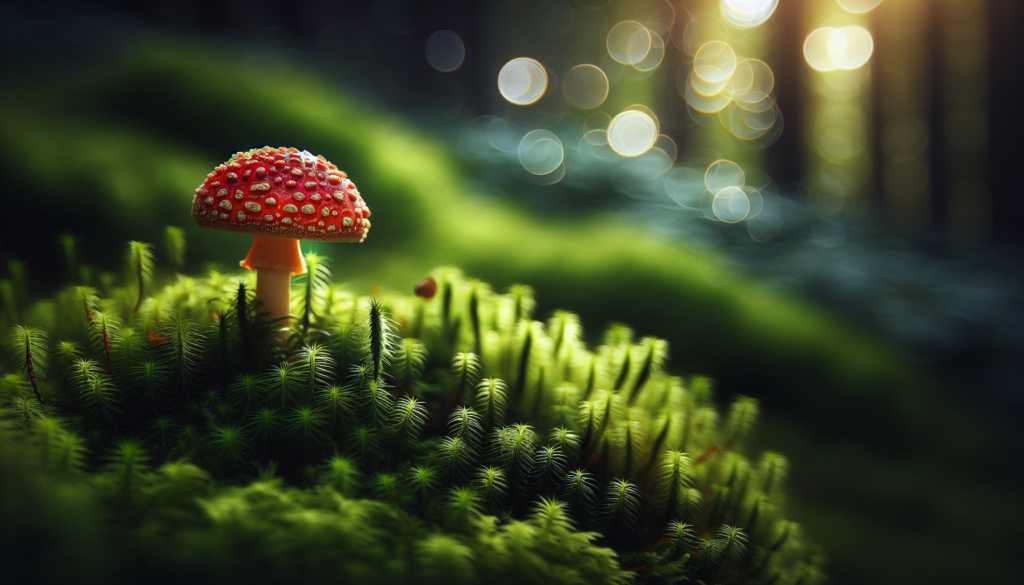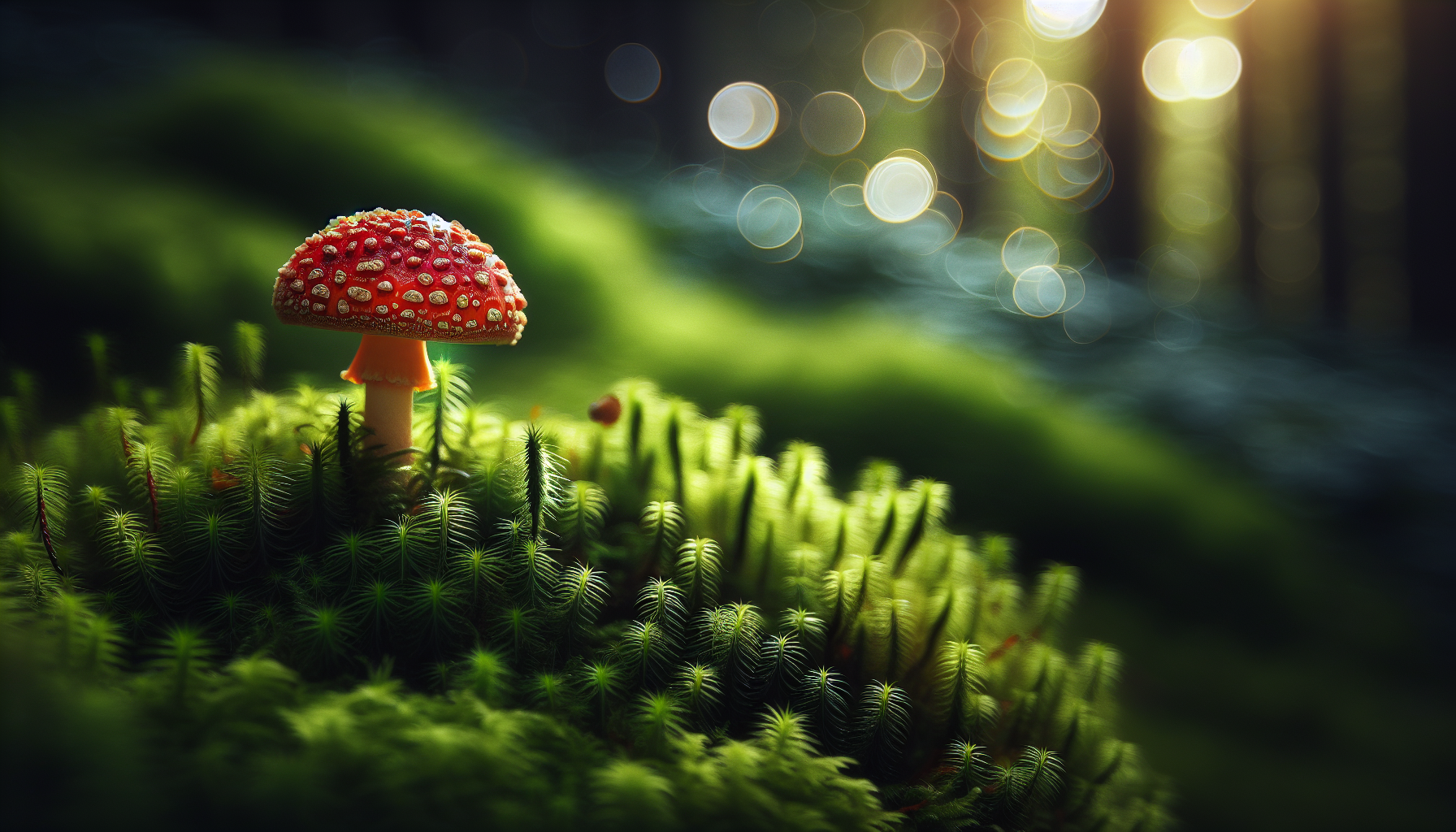You’re in for a fascinating journey today as we explore the enchanting world of mushrooms. Ever wondered what sets poisonous mushrooms apart from their edible counterparts? You’ll soon find out! We’ll uncover the key differences between these mysterious fungi and discover the crucial aspects to consider when foraging for mushrooms. So put on your mushroom-hunting hat and let’s delve into the captivating realm of mushrooms together!

Toxicity Levels
Mild Toxicity
Mildly toxic mushrooms are those that may cause discomfort or digestive issues when consumed. Symptoms may include mild nausea, vomiting, abdominal pain, or diarrhea. While these mushrooms are not usually life-threatening, it is still important to exercise caution and avoid consuming them. It is worth noting that the toxicity levels can vary from individual to individual, so what may be mildly toxic to one person could have more severe effects on another.
Moderate Toxicity
Moderately toxic mushrooms can cause more severe symptoms and may pose a greater risk to health. Ingesting these mushrooms can lead to gastrointestinal distress, such as intense abdominal pain, severe vomiting, or diarrhea. Moderate toxicity mushrooms can also have neurological effects, such as hallucinations or confusion. It is crucial to be aware of the potential risks associated with these mushrooms and to avoid consuming them.
Severe Toxicity
Mushrooms with severe toxicity levels pose a significant threat to human health and can be potentially life-threatening. Consumption of these mushrooms can result in severe gastrointestinal symptoms, liver damage, organ failure, or even death. Symptoms of severe toxicity may include convulsions, difficulty breathing, paralysis, or coma. It is important to educate oneself about the identification and dangers of these mushrooms to prevent accidental ingestion.
Appearance
Color
Mushrooms come in a wide array of colors, but color alone is not a reliable indicator of toxicity. While certain mushroom species may exhibit distinct color patterns associated with toxicity, it is essential to consider other characteristics in conjunction with color to accurately identify the mushroom’s potential toxicity. It is best to consult a field guide or an expert mycologist to determine the safety of a mushroom based on its color.
Shape
The shape of mushrooms can vary greatly, ranging from the classic umbrella-like cap to more irregular or unique forms. While some poisonous mushrooms may have distinct shapes, many edible mushrooms also display similar characteristics. It is essential to consider other factors, such as gill structure, spore color, and habitat, to differentiate between different mushroom species and determine their toxicity level accurately.
Size
Mushrooms come in various sizes, from tiny button mushrooms to large, imposing specimens. The size of a mushroom alone is not indicative of its edibility or toxicity. Some edible mushrooms can be quite small, while others can grow to be substantial. It is crucial to assess all characteristics, including color, shape, and other distinguishing features, to make an informed determination about a mushroom’s safety for consumption.
Habitat
Subterranean Mushrooms
Some mushrooms prefer to grow below the ground, feeding on decaying organic matter. These subterranean mushrooms are typically not visible to the naked eye and require careful identification techniques to differentiate between toxic and edible species. Examples of subterranean mushrooms include truffles, which are highly prized for culinary purposes but must be gathered responsibly and with knowledge of their distinct features.
Wood-Inhabiting Mushrooms
Wood-inhabiting mushrooms, as the name suggests, grow on decaying logs, stumps, or trees. While many wood-inhabiting mushrooms are edible and sought after for their unique flavors, some can be toxic or even deadly. It is important to have a thorough understanding of different species and their characteristics before consuming any wood-inhabiting mushrooms.
Lawn Mushrooms
Lawn mushrooms are those that commonly sprout up in grassy areas, particularly after rainfall. They can vary in shape, color, and size. While some lawn mushrooms are edible, others can be harmful or poisonous. It is important to exercise caution when consuming mushrooms found in lawns, as they may have been in contact with pesticides or harmful substances. When in doubt, it is best to consult an expert before consuming any lawn mushrooms.
Smell
The smell of a mushroom can be an essential factor in identifying its species, distinguishing between edible and toxic varieties. Some mushrooms have distinctive odors that may be pleasant, while others emit foul or pungent smells. However, it is important to note that using smell alone as the sole means of determining a mushroom’s edibility or toxicity is not recommended. Smell should always be considered in conjunction with other characteristics and confirmed through expert guidance or reliable field guides.

Taste
Taste can be a helpful indicator of a mushroom’s edibility or toxicity, but it should only be relied upon after ensuring proper identification through other means. Some edible mushrooms, such as morels or porcini mushrooms, have delicious flavors sought after by culinary enthusiasts. However, many toxic mushrooms have an appealing taste, making it extremely risky to rely solely on taste to determine safety. Always exercise caution and seek expert advice when consuming mushrooms, even if they have a pleasant taste.
Gills and Pores
Presence and Structure of Gills
Gills are thin, often blade-like structures found on the underside of the mushroom cap. Many edible mushrooms have gills, which typically release their spores into the air. However, it is important to note that while the presence of gills can indicate an edible mushroom, it does not guarantee safety. Some toxic mushrooms also possess gills, emphasizing the importance of considering other characteristics for accurate identification.
Presence and Structure of Pores
Pores are small, often circular openings found on the underside of certain mushroom species instead of gills. These pores release spores and can be an identifying characteristic for particular edible mushrooms, such as boletes. However, like gills, the presence of pores does not automatically ensure edibility. Some toxic mushrooms also possess pores, underscoring the necessity of comprehensive evaluation and expert guidance when distinguishing between different species.
Spore Color
The color of a mushroom’s spores can be an important factor in identification and determining its edibility or toxicity. Spore color can vary greatly, ranging from white or cream to brown, black, or even vibrant colors like purple. Field guides and expert mycologists can provide information on specific mushroom species and their corresponding spore colors. It is crucial to conduct spore prints and compare them to reliable sources to accurately identify a mushroom’s spore color and potential risks.
Cap Shape
The shape of a mushroom’s cap can be highly variable, ranging from flat or convex to bell-shaped, conical, or even irregular. While certain toxic mushrooms may exhibit specific cap shapes, many edible mushrooms share similar characteristics. It is important to assess other features in conjunction with cap shape, such as color, gill structure, or stem characteristics, to accurately determine a mushroom’s edibility or potential toxicity.
Stem
Stem Color
The color of a mushroom’s stem can vary, including shades of white, brown, yellow, or even brightly colored hues. While stem color alone is not a reliable indicator of edibility or toxicity, it is an essential characteristic to consider in conjunction with other factors during mushroom identification. Some toxic mushrooms may have distinct stem colors, but edible mushrooms can also display a wide range of stem colors. Use caution and consult reliable sources or experts to make an informed determination.
Stem Structure
The structure of a mushroom’s stem can provide valuable clues for identification and assessing its edibility or toxicity. Some mushrooms have fibrous or hollow stems, while others may be solid or bulbous. The presence or absence of a ring or a volva (a cup-like structure enclosing the base of the stem) can also be essential distinguishing features. It is crucial to observe and document the various characteristics of a mushroom’s stem to accurately differentiate between different species and make informed decisions.
Veil
Presence of Veil
The veil refers to a thin membrane or covering that protects the gills or pores of developing mushrooms. The presence or absence of a veil can be a distinguishing characteristic that helps identify different species. Some mushrooms have a partial veil, a veil that extends from the stem to the cap’s edge, while others may have a complete veil that encloses the entire immature mushroom. The presence of a veil alone does not indicate edibility or toxicity but is a vital clue for accurate identification.
Veil Type
Different types of veils can also be indicative of specific mushroom species. For example, some mushrooms have a universal veil, which wraps around the entire mushroom when it is young and often leaves remnants known as volval patches or warts on the cap or stem. Others may have a cortina, a cobweb-like veil that covers the gills or pores and may disappear as the mushroom matures. Understanding the various types of veils and their characteristics can assist in distinguishing between different mushroom species and assessing their edibility or toxicity.



No Responses